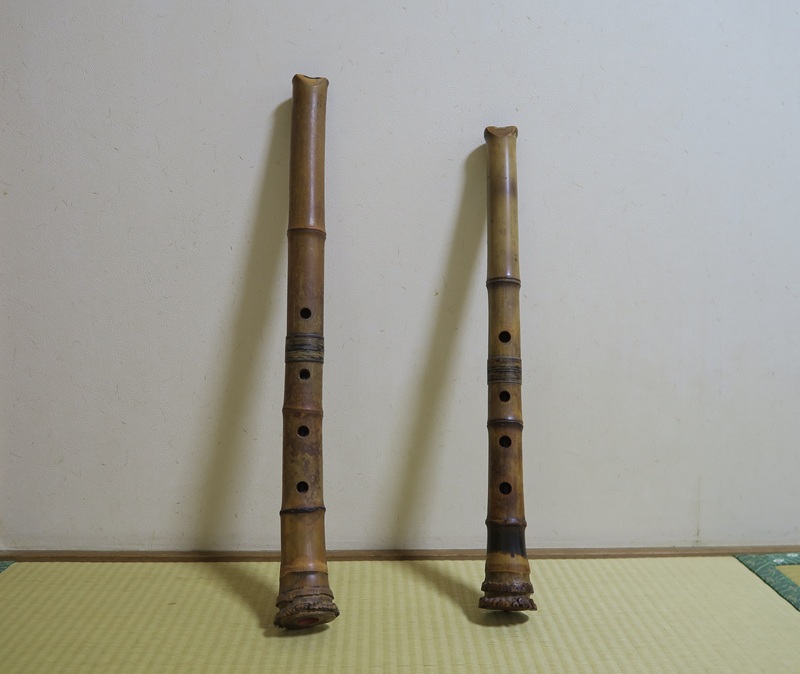Shakuhachi
Oct. 17, 2025

This photo shows the third instrument I play; Shaku-Hachi and Shaku-Roku. “Shaku” is a unit of length, approximately 30cm. “Hachi” is 8, and “Roku” is 6. So Shaku-Hachi is 1.8 shaku length, and Shaku-Roku is 1.6 shaku length bamboo flute. Both originally belonged to my father.
He was a Zen monk for a time when he was young, which is probably why he had the shakuhachi. He played them every day, but when he turned 85, he gave them to me. He said, “Getting tired to play.”
Shakuroku is one tone higher than shakuhachi. Shakuhachi has a thicker sound and sounds more like a ‘shakuhachi’, but this shakuhachi isn’t playable now. I’d like to write the reason later.
Shakuhachi is a wind instrument but it can be a complete solo instrument. Generally speaking, wind instruments aren’t good for playing harmony or rhythm. They are good for playing melodies, but since they can only make one note at a time, they cannot play all three elements at the same time. So, most Western flute solo pieces have a piano accompaniment, and by it, the three essential elements of music are satisfied.
However, traditional Japanese music doesn’t have the concept of harmony. Furthermore, there is no concept of rhythm in traditional shakuhachi solo pieces. Therefore, the music can be complete with only shakuhachi.
I’ll show you one piece for reference. This is the only piece my father taught me how to play. When I say he taught me, I mean he just taught me how to read the score and the fingering. I can no longer find the sheet music, so I don’t know the composer or the title of the piece, but I remember it being the second piece in a suite of three pieces, and depicting a snowy night scene.
Snow Night – The exact title forgotten –
This piece was probably written after Western music was introduced to Japan. It is quite different from Western music, but it has some ingenuity to make it appealing to audiences, so I think it can still be called music. However, the pieces played as part of Zen practice are for one’s own spirit and are no longer music. The following is the piece that Zen monks play when they go out to beg.
HiHuMi – Literally, ‘One Two Three’.
I don’t know how Zen monks practice Zen with shakuhachi, but when I play this piece, I realize that it’s not meant to entertain people. This is a method to clear one’s mind, not by trying to play better, but by concentrating on listening to the sound beeing made. I feel so.
In the performance above, the sound is distorted in several places. It is the reflection of my evil thoughts of trying to play better.
I only play the shakuhachi for a few minutes a week, but it’s good for me to take that time.
By the way, I used shaku-Roku for the above performances. The shaku-Hachi has a much deeper sound, but my shakuhachi can not make sound now.
My father passed away at the age of 94, nine years after giving me the shakuhachi. He died from an aortic dissection, which split vertically the largest blood vessel leaving the heart. Until just before his death, he had been enjoying dinner with his family, and just as he had gone to his bed, the symptoms started and he lost consciousness and passed away. It was a painless peaceful death.
A few days after the funeral, I tried to play the shakuhachi, but for some reason, no sound came out. Looking closely at the instrument, I found it split vertically. It’s made of bamboo, so this can happen.
I could have it repaired, but I hesitate to fix this shakuhachi — which ended its musical life in the same way as my father, as if following in the original owner’s footsteps. So it remains unrepaired to this day.